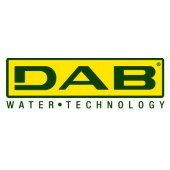A step change for pumping station and catchment optimisation
 Chris Callander reports on an innovative approach to pumping station and catchment operation, which has been pioneered by Anglian Water, with support from Schneider Electric.
Chris Callander reports on an innovative approach to pumping station and catchment operation, which has been pioneered by Anglian Water, with support from Schneider Electric.
In the heart of England, Anglian Water manages an intricate sewage system that spans 76,000km of pipes. This vast network collects approximately 1 billion litres of wastewater daily, directing it to 1,134 sewage treatment works through 7,165 pumping stations.
Instead of separating wastewater from bathrooms, kitchens, and toilets from rainwater, most of the network combines these flows. Over the next 25 years, the region expects half a million new homes and an influx of one million more residents. Add to this the looming threats of climate change, with its higher temperatures, unpredictable rainfall patterns, and rising sea levels, and Anglian Water’s system is under undeniable strain. The sewers, at times, become surcharged or overwhelmed. This can lead to two major issues: either the sewage works can’t handle the excess, resulting in pollution events, or the sewage backs up in the pipes, leading to releases through manholes or, in extreme cases, flooding homes.
Storm overflows, known as Combined Sewer Overflows (CSOs), have been designed to combat this. These CSOs act as an emergency discharge valve, operating once the flow rate exceeds a certain value at vulnerable locations. However, with the increasing strain on the system, these CSOs operate more frequently than intended, leading to detrimental environmental impacts and subsequent fines.
Historically, the management of these systems relied on independent sewage pumping stations with basic pump control. This approach was leading to regular issues in the catchment of Strumpshaw, Norwich. Known as a repeat offender for sewer bottlenecks that affected customers, the region needed an intelligent solution. The question was, what would that solution look like?
Smart catchment management
Enter the era of smart catchment management. Instead of relying on independent stations, the focus shifted to connected sewage pumping stations equipped with intelligent pump control. This new system integrates PLC control, radar level measurement, flow monitoring, pump speed control, mobile communications, storm weather control, inhibit control, rate of change initiation, and tailored control configurations to ensure that all elements of the wider system are working together. This means that the situation at another station in the catchment may inform the operation of an individual pumping station. This enables, for example, underutilised pumping stations to share the workload with others in the catchment, which may be at risk of becoming overloaded – in turn reducing the overall need to discharge to the river network.
At the heart of this intelligent pump control is Schneider Electric’s AquaMetis system. Drawing inspiration from the words ‘water’ and ‘wisdom’, AquaMetis offers a fully configurable solution that reduces energy and operating expenses, wear on assets, and deployment time. Built on reliable, off-the-shelf modular technology, it can be easily integrated into existing systems. AquaMetis offers a series of pump duty modes, with inbuilt burst main and blockage detection and dry run protection. One of its standout features is the ‘Consented Pass Forward Flow’, which allows for configuration, monitoring, and alarming of the CSO consents, minimising the instances of discharge into rivers and coastal environments.
Setting up and operating the AquaMetis is intuitive. There’s no need for programming for pump station setup. With a simple ‘power and go’ approach, users can easily access station and pump setup, pump status and operating mode, levels, setpoint control, detailed pump data, alarms, and more.
The results? Since the system went live in Strumpshaw in October 2022 there have been zero system spills and zero environmental impacts. Customer satisfaction has soared, operational expenses have been reduced, and countless work hours have been returned to Anglian Water, which the utility can use on other priorities.
Looking to the future, Anglian Water has ambitious plans. It aims to expand this system to other, larger, and more complex catchments. The focus will be on flow control, integrating weather data and forecasting, aiding treatment works compliance, ensuring whole asset base efficacy, predictive maintenance, energy savings, and wider operational expense savings. There’s even talk of a potential £30 million investment to enhance the highest priority catchments.
In conclusion
Anglian Water’s innovative approach to pumping station and catchment optimisation is a testament to the power of technology and forward-thinking. By embracing smart catchment management and the AquaMetis system, the organisation has addressed current challenges and set the stage for a sustainable future. As we look to the future, it’s clear that with such advancements, we’re well on our way to creating sewage systems that are functional, sustainable, and environmentally conscious.
Back to Latest News





1.png&w=170&h=170)


3.png&w=170&h=170)



2.jpg&w=170&h=170)